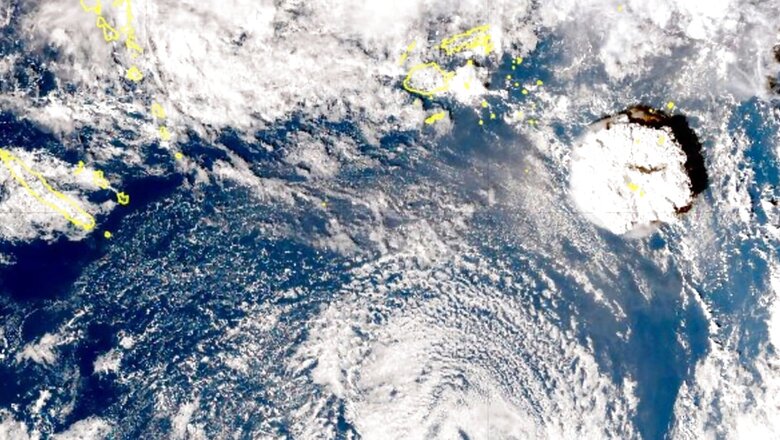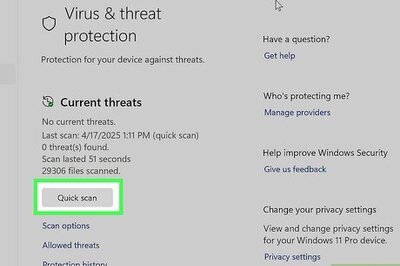
views
An undersea volcano erupted near the Pacific nation of Tonga on Saturday, sending large waves crashing across the shore and people rushing to higher ground. Tonga, properly known as the Kingdom of Tonga, is an archipelago south of Samoa. Located in the South Pacific Ocean, just shy of 2000 miles east of Brisbane, Australia, Tonga comprises of over 150 islands, some of which are uninhabited. The massive eruptions triggered tsunami warnings across the Pacific, with the United States and Japan urging people on their Pacific coastlines to stay away from the shores. Visuals on social media from South Pacific islands showed waves crashing into coastal homes. Internet and phone lines went down at about 6.40 p.m. local time on Saturday, leaving the 105,000 residents on the Tonga islands virtually uncontactable.
Australia issued a marine tsunami warning for the New South Wales coastlines, Lord Howe Island and Norfolk Island, and said local beaches along the state’s coast have been closed. A tsunami advisory was also issued in New Zealand.
How do Volcanic Eruptions Generate Tsunamis?
Violent volcanic eruptions represent impulsive disturbances, which can displace a great volume of water and generate extremely destructive tsunami waves in the immediate source area. According to this mechanism, waves may be generated by the sudden displacement of water caused by a volcanic explosion, by a volcano’s slope failure, or more likely by a phreatomagmatic explosion and collapse or engulfment of the volcanic magmatic chambers, as per UNESCO’s International Tsunami Center.
Tsunamis can also be caused by mechanisms such as volcanic earthquakes, undersea eruptions, pyroclastic flows, caldera collapse, landslides, lahars, phreatomagmatic eruptions, lava bench collapse, and airwaves from large explosions.
What Led to the Violent Volcanic Eruption in Tonga?
The volcano consists of two small uninhabited islands, Hunga-Ha’apai and Hunga-Tonga, poking about 100m above sea level 65km north of Tonga’s capital Nukualofa. The Hunga-Tonga-Hunga-Ha’apai volcano has erupted regularly over the last few decades. During events in 2009 and 2014/2015, hot jets of magma and steam exploded through the waves. But these eruptions were small, dwarfed in scale by the January 2022 events. According to Shane Cronin, Professor of Earth Sciences in University of Auckland Wellington, such a massive eruption will only occur once in a thousand years.
An underwater volcano is usually believed not to be so explosive since the magma will be expected to be cooled down by the sea water. However, researchers point out that a fuel-coolant interaction, akin to weapons-grade chemical explosion, could’ve taken place when the hot magma rapidly comes into direct contact with cold water.
What Happens Now?
The island is currently obscured by ash clouds that are 20km high. It spread out almost concentrically over a distance of about 130km from the volcano, creating a plume with a 260km diameter, before it was distorted by the wind, Cronin writes in The Conversation.
It remains unclear if this is the climax of the eruption. It represents a major magma pressure release, which may settle the system. A warning, however, lies in geological deposits from the volcano’s previous eruptions, Cronin says. These complex sequences show each of the 1000-year major caldera eruption episodes involved many separate explosion events.
(With agency inputs)
Read all the Latest News here




















Comments
0 comment